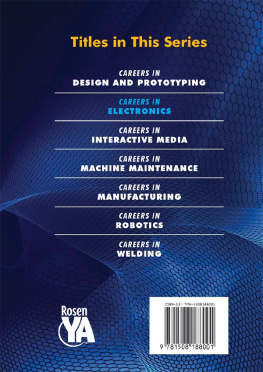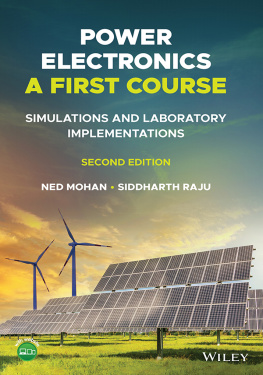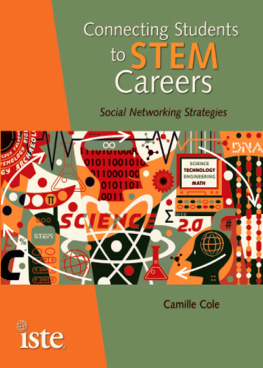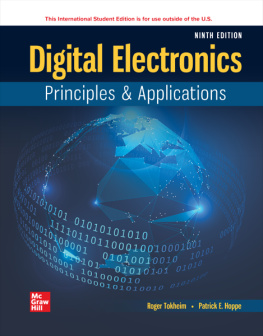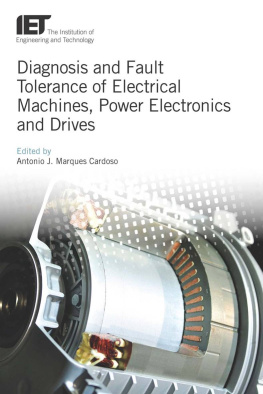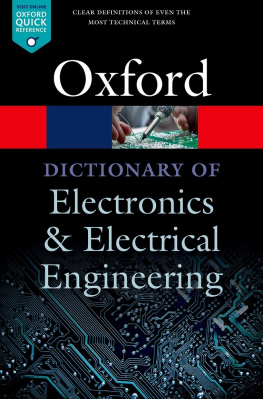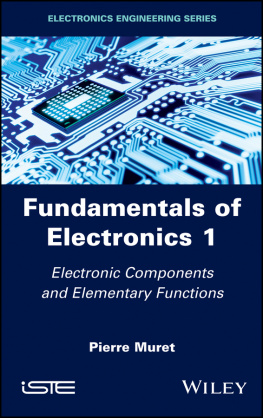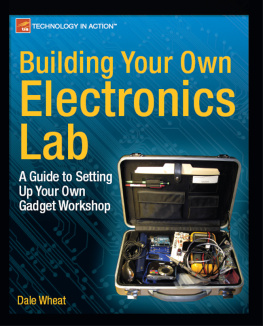Published in 2020 by The Rosen Publishing Group, Inc.
Copyright 2020 by The Rosen Publishing Group, Inc.
All rights reserved. No part of this book may be reproduced in any form without permission in writing from the publisher, except by a reviewer.
Names: Hamilton, Tracy Brown, author.
Title: Careers in electronics / Tracy Brown Hamilton.
Description: First edition. | New York, NY: Rosen Publishing, 2020.
| Series: Makerspace careers | Includes bibliographical references and index. | Audience: Grades 712.
Identifiers: LCCN 2018047083| ISBN 9781508188018 (library bound) | ISBN 9781508188001 (pbk.)
Subjects: LCSH: ElectronicsVocational guidanceJuvenile literature. Classification: LCC TK7845 .H36 2020 | DDC 621.381023dc23 LC record available at https://lccn.loc.gov/2018047083

INTRODUCTION
I magine a learning environmentbe it in your school, public library, community center, or other public space in which you have access to various tools for exploring and working together with others to create something. A makerspace is just that: a place where anyone of any age can have access to hands-on learning tools, cutting-edge technology such as 3D printers, and more low-tech materials like building blocks. At a makerspace, anyone can gain experience in anything from robotics to coding to wood-workingand, of course, electronics.
Makerspaces can help prepare you for a future career in electronics, among other fields, by providing a means for you to gain knowledge and experience in science, technology, engineering, and math (STEM). Beyond educational value, some entrepreneurs have used makerspaces as a sort of platform for developing and creating products and services. Get ready to explore some of the success stories that have makerspace roots.
A makerspace is similar to other social groups with a hobby-related focus, such as a reading group or an arts-and-crafts club. The so-called maker movement from which makerspace culture comesis, according to John J. Burke, author of Makerspaces: A Practical Guide for Librarians, the surge of interest in creating physical items with digital tools and Internet-shared plans and techniques.

A makerspace is the perfect environment to experiment and learn about electronics in a hands-on way while spending time with people who share your curiosity.
Members of makerspaces participate in various creative projects, including but not limited to the following:
Cardboard construction
Prototyping
Woodworking
Electronics
Robotics
Digital fabrication
Building bicycles and kinetic machines
Textiles and sewing
Organizing a makerspace requires a public space, materials and tools for projects, and often an experta makerspace teacher to guide members in executing their creative vision. More than just a space, a makerspace particularly for studentsis an educational approach based on the philosophy that rather than using technology to entertain, communicate, or just as a distraction, students can use it to be creative. A makerspace is where students (and adults alike) can express their curiosity, explore their own interests, and have access to the tools to develop their ideas into tangible objects.
If youre interested in a career in electronicsa broad field that includes everything from electrician to aerospace engineera makerspace is a great opportunity to become familiar with using technical equipment, tinkering around with electronics and circuits, repairing broken electronics, and using other tools like soldering irons and power drills.
Having hands-on experience and confidence with electronics and electronics-related topics will give you an edge later in life as you pursue further education and a successful career.
The following information explores more deeply how makerspaces operate and what the benefits are, specifically focused on setting you on the path to a satisfying career in electronics. It covers how to find a local makerspace and how to go about creating your own if one doesnt already exist. Youll learn about various types of jobs that fall under the category of electronics, as well as the various educational paths you can follow to find a satisfying career.
CHAPTER ONE
WHAT IS A MAKERSPACE, AND HOW CAN I BENEFIT FROM ONE?
C ollaboration, community formation, and group learning while creating something new in a single space are at the core of the so-called maker movement. It is a phenomenon that is growing worldwide. And more and more, the movement is involving young people. According to the New Media Consortiums Horizon Report, Makerspaces are expected to be increasingly adopted by schools in one years time or less to make use of mobile learning and cultivate environments where students take ownership of their education by doing and creating.
The maker movement is a social movement with a creative and community focus, and the benefits of hands-on learning have made makerspaces increasingly popular in schools and public libraries. In 2009, then-president Barack Obama launched his Educate to Innovate campaign, supporting and encouraging making experiences for students. In an address to the National Academy of Sciences, Obama said, I want us all to think about new and creative ways to engage young people in science and engineering, whether its science festivals, robotics competitions, fairs that encourage young people to create and build and inventto be makers of things, not just consumers of things. The approach encourages innovation and creativity, in school and beyond.

Working in a makerspace helps prepare you to think in a more innovative, experimental way than learning from a textbook alone does.
A BRIEF HISTORY OF MAKERSPACE CULTURE
So how did this all get started? The notion of collaboration, especially with creative tasksbe it flower arranging or woodworkingis not new. But the makerspace culture grew out of a particular do-it-yourself culture. A 2014 article in the Christian Science Monitor by Noelle Swan describes the movement as a new industrial revolutioncombining the spirit of the old shop class with modern tech in community Do It Yourself spaces.
As technology and modernity move people further away from working with their own hands to repair or createpeople are now feeling a desire to be more in touch with the physical world, according to Matthew Crawford, author of Shop Class as Soulcraft. Returning to the idea of interacting with the world in a hands-on, curious wayto combine doing with thinkinghas gained worldwide appeal. Rather than encourage more academically successful students to focus on books and steer them away from manual tasks, such as small motor repair and woodworking, the maker movement emphasizes the value of both kinds of work for all students, enabling them to have ideas and then also to bring those ideas to life.
John Spencer, former classroom teacher and now author and producer of online project-based learning and makerspace courses, says the makerspace movement is needed because the demands on students and the skills they will require in the future are shifting.

